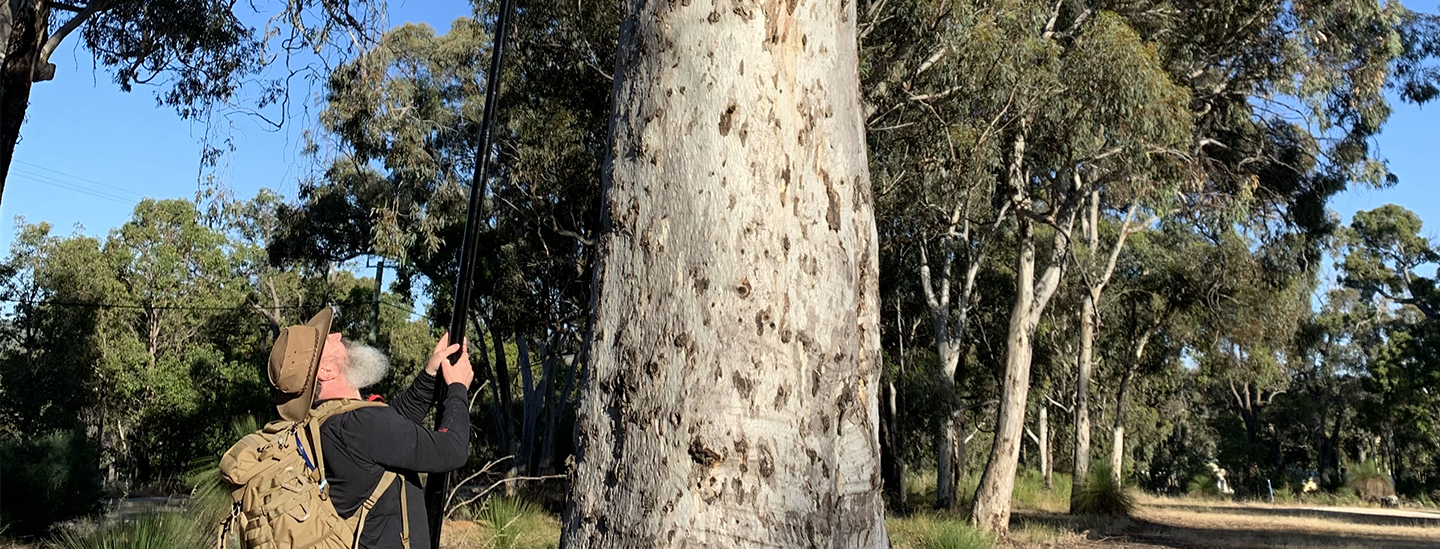Black-cockatoo breeding season is upon us here in the Wheatbelt! Black-cockatoos are being seen around the Wheatbelt and their behaviours can help to indicate whether they’re breeding and if so, what stage of the breeding cycle they’re in. At the start of the breeding season, the pair can be seen prospecting to find a suitable hollow. The female will enter potential hollows to inspect them while the male sits on a branch nearby. If the female has selected the hollow for breeding, there may be fresh chipping around the hollow entrance to line the base of the hollow for the eggs. After the female lays her egg, she will sit on the nest for around 30 days, only leaving for water and to be fed by the male. During this time, large flocks of males may be seen foraging together and returning to their nests to feed their mate. The male will return to the nest mid-morning and again late in the afternoon. Once the egg has hatched, both the male and the female forage together and return to the nest to feed the hatchling, again returning mid-morning and late in the afternoon. These patterns of behaviour can indicate that breeding is occurring as well as a general idea of where, as they will travel between 6 to 12km from their nest to forage.
Black-cockatoos are believed to have bred right across the Wheatbelt historically. With the advent of clearing, and the resulting fragmentation, little is known about the actual distribution of specific breeding locations around the Wheatbelt. At this time of year many of us see large flocks of black-cockatoos foraging for food and water, so we know they’re definitely out here! The lack of understanding surrounding specific breeding locations essentially comes down to resourcing for survey work. It is incredibly rewarding but at the same time very labour intensive. There are vast tracts of remnant vegetation on private property throughout the Wheatbelt which will undoubtedly contain many nesting hollow locations which are used year after year. The limiting factor to discovering these being the resources required to actually look.
Our black-cockatoo project requires us to work within close proximity to a known nesting area, and as such we’ve been surveying areas to find nests. As they are widespread throughout our region and their patterns aren’t well known, we’ve been relying on community surveys to determine where we should be surveying. To date, we’ve surveyed over 650 ha of remnant bushland on private property and found an additional 10 nesting locations. Any nest we find is very exciting and allows us to conduct project activity around the area to help secure the nest and increase breeding success into the future, however we’re barely scratching the surface of the areas black-cockatoos are using throughout our region. This is where we rely on our community to let us know where they’re seeing cockatoos and what behaviours they’re exhibiting so we can target our search efforts.
This project is delivered by Wheatbelt NRM, through funding from the Australian Government’s National Landcare Program.
If you would like more information on our black-cockatoo project, please get in touch by contacting Alex Griffiths on 9670 3602 or at agriffiths@wheatbeltnrm.org.au.


